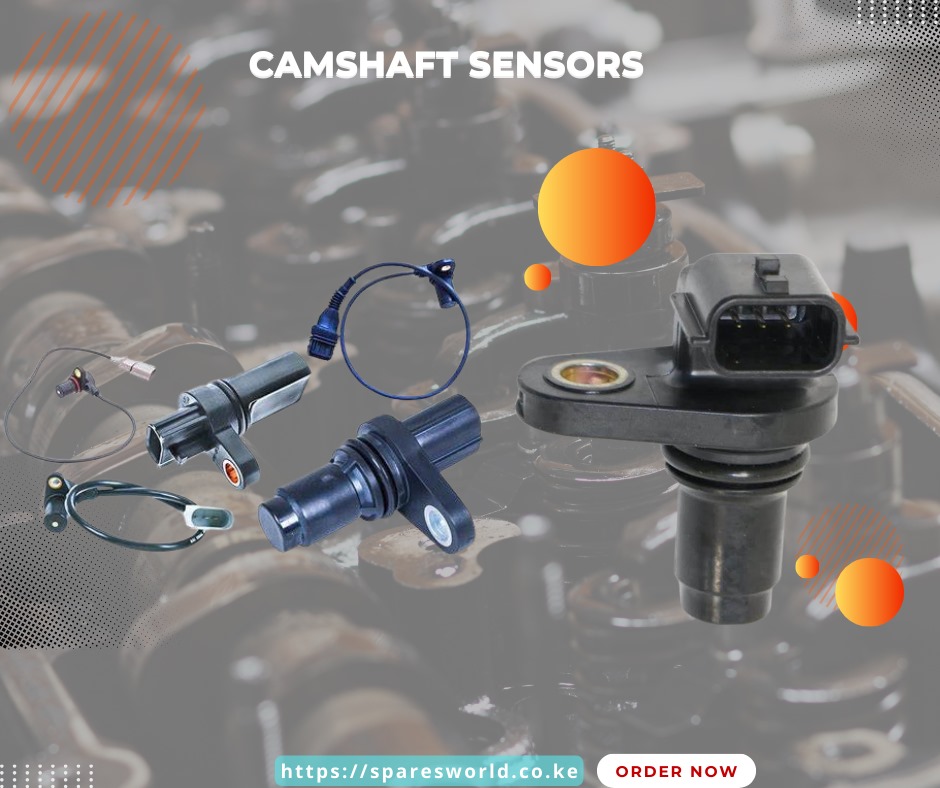Signs of a Faulty Camshaft Sensor

Discover how a failing camshaft sensor can affect your vehicle's performance and what symptoms to watch out for.
Understanding the Role of the Camshaft Sensor in Your Vehicle
The camshaft sensor, also known as the camshaft position sensor, plays a critical role in your vehicle's engine. It monitors the position or rotational speed of the camshaft, which controls the intake and exhaust valves. This information is vital for the engine control unit (ECU) to adjust the fuel injection timing and ignition timing. Without accurate readings from the camshaft sensor, your vehicle may experience difficulty in running smoothly or efficiently.
Ensuring that the camshaft sensor functions correctly is essential for maintaining optimal engine performance. It directly affects factors such as fuel economy, power output, and emissions. A well-maintained sensor helps in preventing engine misfires and keeping the vehicle running at peak condition.
Common Symptoms of a Malfunctioning Camshaft Sensor
The symptoms of a bad camshaft sensor can vary, but there are a few common signs that drivers can look out for. One of the most noticeable symptoms is the check engine light coming on. This can be accompanied by poor engine performance, including difficulty starting the car, rough idling, or stalling. Drivers might also notice a reduction in power or acceleration, or even an increase in fuel consumption, as the engine struggles to maintain efficiency without proper sensor data.
Another symptom of a failing camshaft sensor is intermittent operation of the vehicle's engine. The car may jerk or hesitate during acceleration, which can be a direct result of inconsistent information being fed to the ECU from the camshaft sensor. It is important to note that these symptoms can also be indicative of other issues, so proper diagnosis is key.
How a Faulty Camshaft Sensor Impacts Engine Performance
A faulty camshaft sensor has a significant impact on engine performance because it disrupts the synchronization between the camshaft and the crankshaft. This can lead to engine misfires, where the engine skips one or more power strokes, resulting in uneven performance and potentially damaging the engine over time. The lack of accurate timing information can also cause the ECU to miscalculate fuel delivery, leading to a rich or lean fuel mixture that further hampers engine efficiency and power.
In severe cases, a completely failed camshaft sensor can prevent the engine from starting altogether, as the ECU cannot determine the correct positioning of the camshaft to initiate the engine cycle. This highlights the importance of addressing any issues with the camshaft sensor promptly to avoid more serious mechanical problems.
Diagnosing Camshaft Sensor Problems: Tips and Tricks
Diagnosing a faulty camshaft sensor starts with reading the error codes from the vehicle's onboard diagnostics system (OBD-II). A scan tool can help retrieve any diagnostic trouble codes (DTCs) related to the camshaft sensor. Once you've identified a potential issue with the sensor, inspect its physical condition for signs of damage, dirt, or corrosion, which can interfere with its operation.
If the sensor appears to be in good condition, testing its electrical connectivity and signal output with a multimeter can help determine if it's functioning correctly. It's also advisable to check the camshaft sensor's wiring and connectors for any signs of wear or damage, as these can also cause sensor-related issues. When in doubt, consulting with a professional mechanic can provide a more comprehensive diagnosis and ensure that the correct issue is being addressed.
Preventative Measures and Maintenance Tips for Camshaft Sensors
To reduce the risk of camshaft sensor failure, it's important to follow your vehicle's recommended maintenance schedule. Regular inspections of the sensor and its wiring can help identify potential problems before they lead to engine performance issues. Keeping the engine and its components clean from oil, dirt, and debris can also prolong the life of the camshaft sensor.
If you need to replace the camshaft sensor, using high-quality parts and ensuring proper installation is crucial. Avoid exposure to extreme temperatures and electrical surges, which can damage the sensor. By taking these preventative steps and staying vigilant for the symptoms of a failing camshaft sensor, you can help ensure your vehicle continues to run smoothly.

 Loading..
Loading..